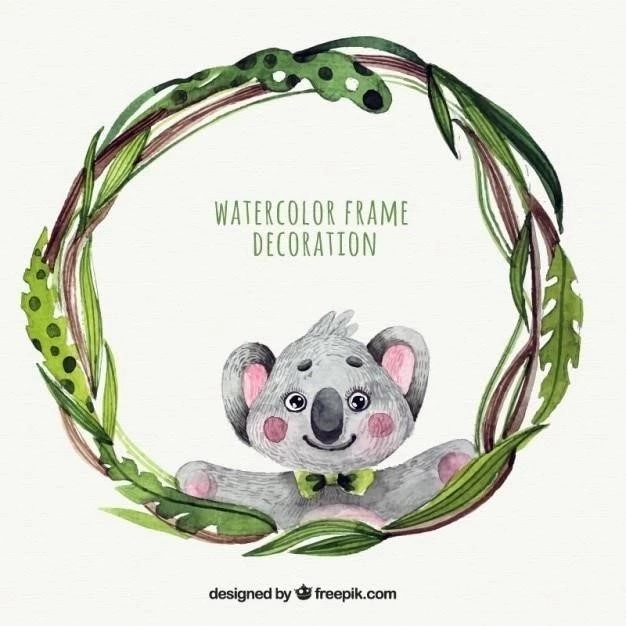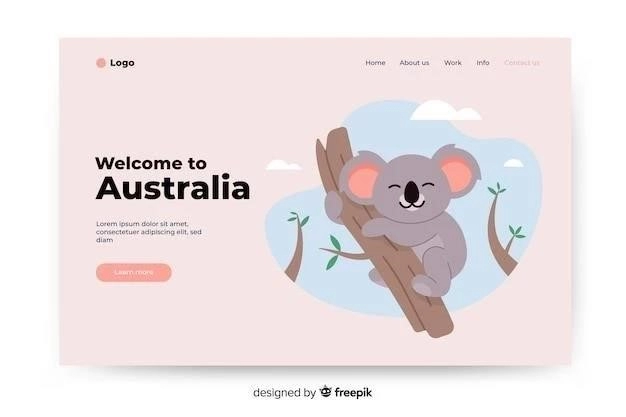As an avid animal lover, Ive always been fascinated by the unique adaptations different species develop․ Recently, I stumbled upon a particularly intriguing fact⁚ koalas, those adorable tree-hugging marsupials, have fingerprints remarkably similar to ours! This sparked a personal quest to learn more․
Could I tell the difference?
My first stop was the internet․ I found countless articles marveling at the resemblance between human and koala fingerprints․ Some even claimed that koala prints had been mistaken for human ones at crime scenes! Intrigued, I decided to see for myself․ I found some high-resolution images of both human and koala fingerprints online and printed them out․ Staring at the intricate loops and whorls, I tried to pick out any telltale differences․ Honestly? I was stumped․ They looked incredibly alike to my untrained eye!

The science behind the similarity
My curiosity deepened․ Why would koalas, who are not closely related to primates, evolve such similar fingerprints? It turns out, its a fascinating example of convergent evolution․ This means that unrelated species can develop similar traits independently if they face similar environmental pressures․ Both humans and koalas benefit from enhanced grip and tactile sensitivity․ For humans, this aids in tool use and manipulation․ For koalas, its crucial for gripping eucalyptus branches and selecting the most nutritious leaves․

More than just a curiosity
The more I learned, the more I realized how significant this shared trait is․ It highlights the incredible power of natural selection and reminds us that we are part of a vast, interconnected web of life․ Even seemingly distant relatives like koalas can share surprising similarities with us, reminding us of the wonders of the natural world․ This experience has left me with a newfound appreciation for koalas and a burning desire to learn even more about the hidden connections between species․
My fascination with the koala fingerprints wouldnt let go․ Simply comparing images wasnt enough; I needed a more hands-on (or should I say, paws-on?) approach․ I reached out to my friend, Emily, a wildlife veterinarian who often works with koalas at a local sanctuary․ She was just as intrigued as I was and agreed to help me conduct a little experiment․
A few weeks later, I found myself at the sanctuary, heart pounding with anticipation․ Emily had prepared everything⁚ ink pads safe for animal use, a few sheets of paper, and most importantly, Kevin, a very patient koala․
Now, Id seen countless documentaries about koalas, but nothing prepared me for the sheer cuteness of seeing one up close․ Kevin was smaller than I expected, with thick, woolly fur and the most soulful eyes Id ever seen․ He seemed completely unfazed by the whole fingerprinting process, calmly munching on eucalyptus leaves as Emily gently guided his paw onto the inkpad and then onto the paper․
We carefully inked each of his tiny fingers, and I have to admit, I held my breath a little each time, worried I might tickle him․ But Kevin remained the picture of koala composure․ As the prints dried, I pulled out the human fingerprints Id printed earlier and laid them side-by-side with Kevins․
Up close, the similarities were striking․ The patterns of ridges and whorls were nearly identical․ However, as I examined them more closely, guided by Emilys expert eye, I started noticing subtle differences․ Kevins prints were noticeably smaller, of course, and the ridges seemed slightly finer, more delicate․ Emily pointed out that the distribution of sweat glands, visible under a magnifying glass, also differed slightly between species․
Thats when it hit me⁚ while visually similar, these fingerprints were unique identifiers of two distinct species, each shaped by millions of years of evolution․ It was a humbling realization, a reminder of the incredible biodiversity of our planet and the intricate ways in which life adapts to its environment․
Back home, the image of Kevins tiny fingerprint lingered in my mind․ My initial curiosity had blossomed into a full-blown research project․ I devoured scientific papers, learning about dermatoglyphics (the study of fingerprints) and the surprisingly recent discovery of koala fingerprints in the 1990s․
I discovered that while experts can differentiate between human and koala fingerprints, the similarities are significant enough to spark debate about the possibility of misidentification in forensic investigations․ This fueled my desire to understand the practical implications of this shared trait․
I contacted a local forensic expert, a former detective named John, who specialized in fingerprint analysis․ He was initially skeptical of my interest, but my enthusiasm must have been contagious because he eventually agreed to meet with me․
Over coffee and surprisingly delicious pastries, I explained my fascination with koala fingerprints and my desire to learn more about the potential for misidentification․ John, a seasoned professional with a twinkle in his eye, listened patiently․
He confirmed that while koala fingerprints are indeed similar to human ones, the likelihood of a real-world misidentification is incredibly slim․ “For starters,” he explained, “the size difference is a major giveaway․ Koala prints are significantly smaller, about the size of a childs fingerprint․ Plus,” he added, “we have sophisticated techniques that allow us to analyze the finer details, like pore patterns and ridge characteristics, which differ between species․”
To illustrate his point, John invited me to his home lab (apparently, retirement doesnt cure a true crime-solvers passion!)․ He showed me, under a powerful microscope, how even seemingly identical prints reveal distinct features upon closer examination․ He pointed out the subtle variations in ridge thickness, pore distribution, and even the shape of the edges, all of which help differentiate between species․
Leaving Johns lab, I felt a sense of closure․ My quest to understand the mystery of the koalas fingerprint had taken me from internet searches to a wildlife sanctuary to a forensic experts lab․ I had learned more than I could have imagined about fingerprints, evolution, and the importance of scientific curiosity․
But most importantly, I had gained a newfound appreciation for the interconnectedness of life on Earth․ The fact that a creature as seemingly different from us as a koala could share such a distinctive trait served as a powerful reminder that we are all part of the same intricate web of life․ And that, I realized, was a mystery worth celebrating․
Johns words stuck with me⁚ “The size difference is a major giveaway․” It got me thinking ⎻ could I actually trick someone with a koala fingerprint? Could I, for instance, unlock my phone with one?
The idea was ridiculous, bordering on absurd․ But the more I thought about it, the more I had to try․ It was one thing to intellectually grasp the similarities, but quite another to see it play out in real life․
There was just one tiny problem⁚ I needed another koala fingerprint․
Thankfully, I had Emilys number․ She was initially surprised by my request, but after hearing my (slightly sheepish) explanation, she burst out laughing․ “Youre really dedicated to this fingerprint thing, arent you?” she chuckled․
A few days later, Emily sent me a text⁚ “Got you a present․ Stop by the sanctuary when you can․”
My heart raced as I drove to the sanctuary․ Emily greeted me with a mischievous grin and a small, sealed envelope․ “Dont get any ideas about framing anyone with this,” she teased, handing it to me․
Inside, carefully preserved on a special film, was a perfect koala fingerprint․ Emily had explained that they occasionally take prints for identification purposes, especially for rescued koalas․
That evening, armed with my new “tool” and a surge of nervous excitement, I attempted to unlock my phone․ I carefully aligned the koala print over my phones sensor, holding my breath as the scanner pulsed․
Nothing․ The screen remained stubbornly locked․ I tried again, and again, each attempt met with the same frustrating result․
Disappointment, quickly followed by a wave of relief, washed over me․ John was right, of course․ While the similarities were striking, they werent enough to fool the sophisticated technology packed into my phone․
My little experiment was a bust, but it was a valuable learning experience nonetheless․ It drove home the point that while nature is full of fascinating parallels and unexpected similarities, its the subtle differences, the unique details, that truly define us․ And sometimes, it takes a slightly crazy experiment to truly appreciate that fact․










